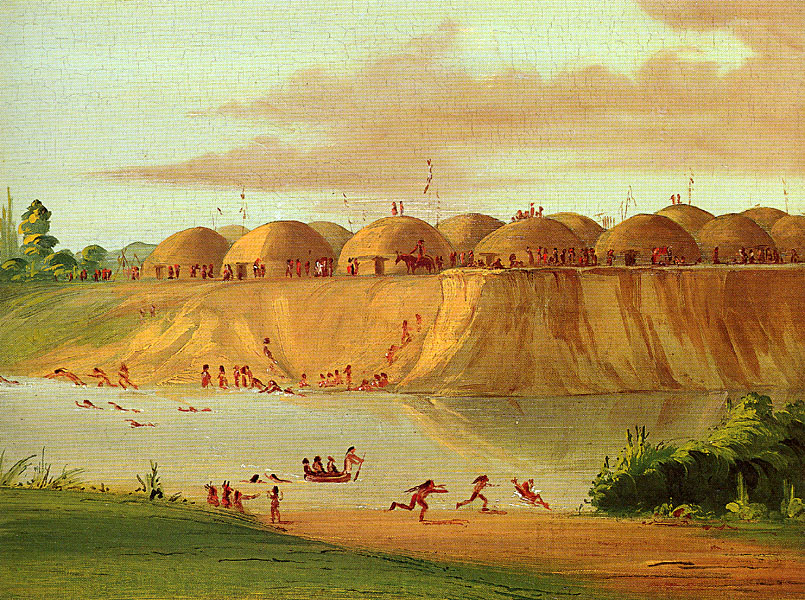
Phil Paine has for years been a critic of most archaeological reconstructions of early human history, both older ones that emphasized large scale migrations to explain technological (agricultural) change and newer ones that explained agricultural innovation by very slow adoption practically farm-by-farm.
In this blog post, "I Called the New World to Redress the Balance of the Old"... A Final Word on the European Neolithic (under Friday, March 7, 2008), Phil suggests that since evidence about the "New World Neolithic" is much more available than that about the European Neolithic, perhaps that evidence can be used to rethink how ancient innovation and ancient economies worked in the Old World. In the process he tells an interesting story of the Three Affiliated Tribes, and zings the notions of "simple" and "complex" societies and the idea that prehistoric trade was only ceremonial gift-giving.
You really need to read the whole thing, but here's a big excerpt to spark your appetite:
When I look at this kind of large-scale trade network [on the Great Plains], what strikes me most dramatically is that sedentary agricultural people, prairie nomads, fishermen, and isolated bands of hunters all participated in the trade network on an equal basis, and trade was of economic importance to all of them. People could not, in fact, be automatically pegged to a specific category, and there is no evidence that particular modes of production constituted a fixed evolutionary sequence, or distinct “levels”. People who lived as mobile hunters in also operated large-scale copper mines that supplied customers as far away as Mexico. Other “nomadic” people set up large permanent fish weirs in order to sell the products to distant farming villages, though they could easily have lived comfortably off of hunting in their area. This did not in any way alter their self-identification with linguistic and cultural relations who did not do this. All these intricate variations lead me to conclude that the trade-networks long predate agriculture, and that agricultural villages expanded into areas, like the Upper Missouri, already well-known through trade and travel. The sites of villages were selected, I believe, because they were already known to be productive centers of fishing, harvesting wild prairie turnips, berry picking, and good places to drive herds of buffalo over bluffs. North America’s network of rivers was an effective system of highways that could carry goods and people swiftly over long distances, and this network was as familiar to everyone as English people are now familiar with the M4 and M6. Significant gaps between agricultural regions along the Missouri, as well as clear traditions of migration (the three Tribes each arrived from different directions) demonstrate that a slow-moving “wave-front” of agriculture was not how agriculture spread, at least in this part of the world. All the evidence points to agriculture being a practice that took advantage of an already extensive trade and transport network to establish itself at strategic nodes, which were already significant for fishing, specialized hunting, as pre-agricultural trading places, or for the availability of specialty products. The Three Tribes were as much concerned with the availability of suitable construction timber as they were with the fertility of the soil, when they placed or moved their villages, and it is not accidental that a major move created a new village called Like-a-Fishhook. The scale, complexity, and economic importance of long-distance trade networks has long been familiar stuff among New World archaeologists, but somehow, this has had only reluctant, and devalued influence on the theoretical framework of European prehistory. There, old habits that regard commerce as ignoble, travel as unnatural, pre-ordained stages as the essence of history, and hierarchy as the preferred ordering principle of society still shape attitudes toward the past. Such ideas, of course, influence New World archaeologists and historians as well, but apparently not quite so rigidly. So, what do these examples from , where we have some secure knowledge of social systems and economies, have to say to us when we contemplate Neolithic Europe, where we have none?
They can tell us nothing for certain, but they can give us a good idea of what was possible, and even what was most likely.
What seems most likely to me is that agriculture spread through Europe by plugging itself into an already-existing network of trade and travel.
Image: Life on the Upper Missouri some time ago (George Catlin, 1832).
No comments:
Post a Comment